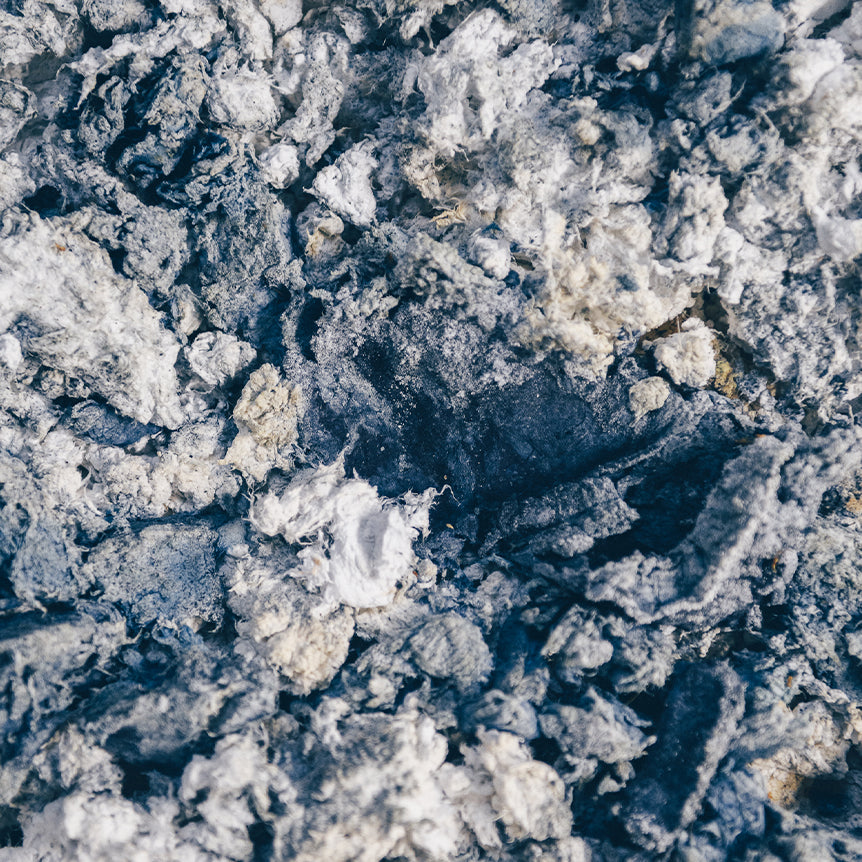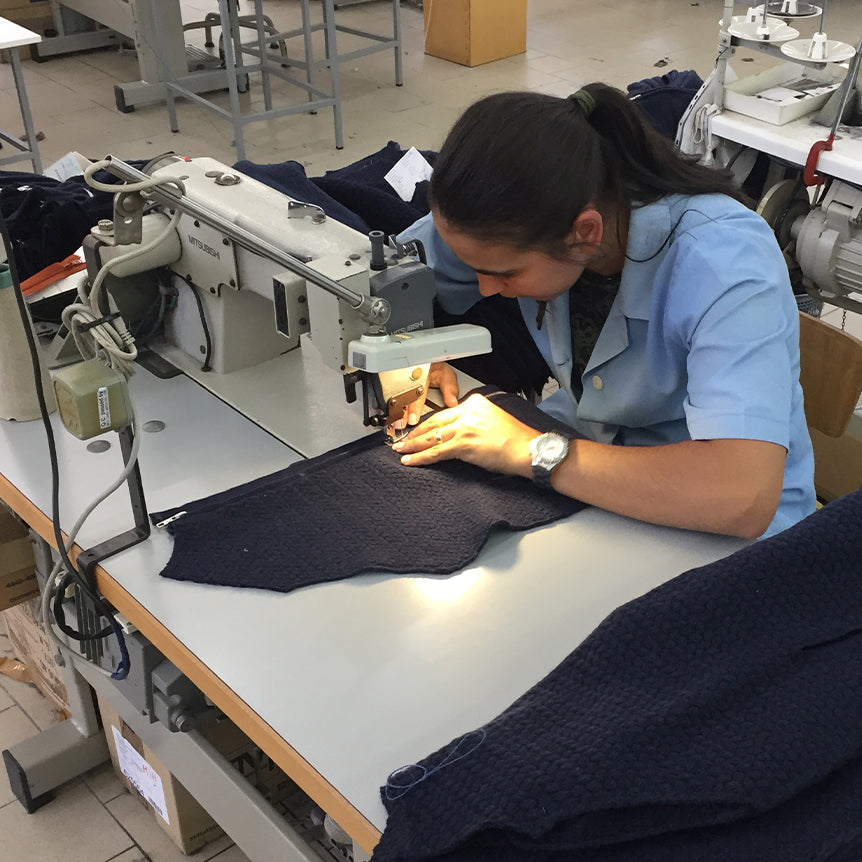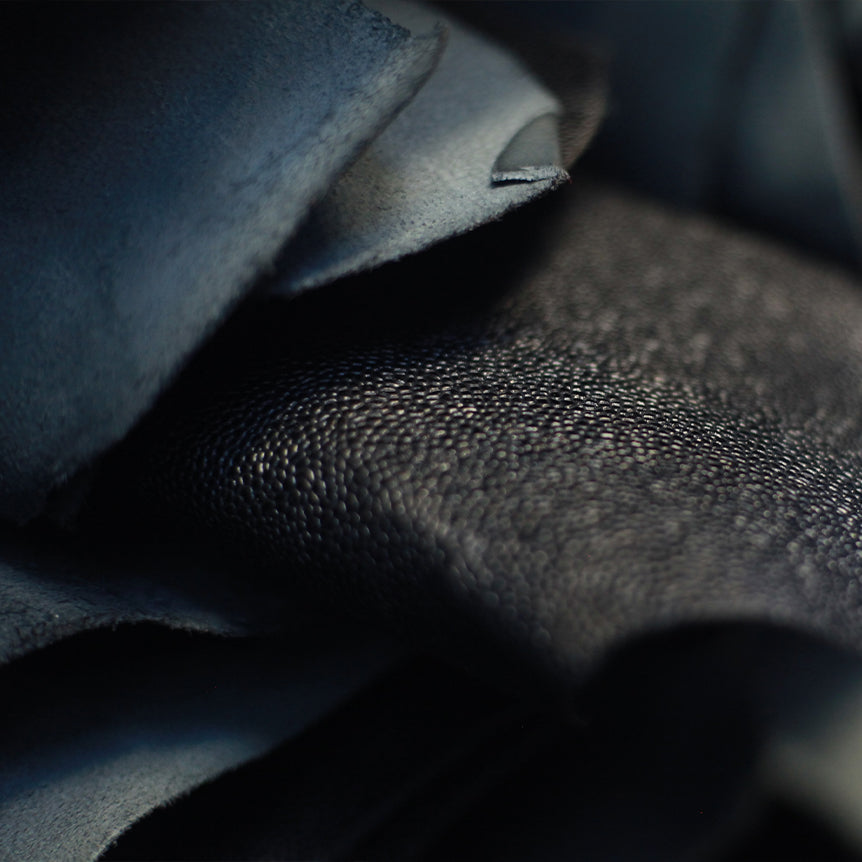Routes to Repurposing


Single Fibre Garments
Garments made exclusively from single fibres such as cotton or wool are processed, and their base material reclaimed. Firstly, these garments are de-buttoned and de-zipped, then shredded and decoloured to create pulp. This pulp undergoes further processing to become new fibres, which are then spun into new yarn. This yarn is subsequently used in the creation of new garments. To further close the sustainability loop, we have plans to buy back some of this recycled fabric for future collections. It's important to note that this is not the default route for garments that can still be repaired or resold; it serves as a responsible end-of-life option for items that have completely worn out their usefulness.
Our partner in this venture aims to recycle the equivalent of over 1.4 billion t-shirts annually by 2030, leveraging unique, patent-protected technology developed by world-leading cellulose chemistry researchers.

Mixed Fibre Garments
For garments crafted from mixed fibres or treated with special coatings, we have established a partnership with a social enterprise that also serves as an academic institution. This partnership allows us to channel mixed fibre garments into educational programmes where they can be either upcycled or downcycled.
Upcycling refers to the process where these garments are enhanced and revitalised into new garments or products by design students, thereby extending their lifecycle. Garments not suitable for upcycling undergo downcycling. In this case, they are disassembled and the individual components are utilised in educational courses that focus on vocational skills such as stitching and pattern-making.
Importantly, the social enterprise we're partnering with has a strong community focus, particularly geared towards local residents who may be unemployed or out of formal education. These individuals are offered the opportunity to learn valuable skills in garment-making.

Footwear & Accessories
All footwear is directed to a specialised facility for comprehensive recycling. Shoes are split into their sole units and uppers. The rubber soles are either downcycled into faux leather or fully recycled into new sole units, while the uppers undergo similar processing. This specialised facility has a unique approach that pulverises and separates footwear into pure constituent materials, such as rubber foam, textiles, plastics, metals and leather. These materials find new life in various applications, ranging from playgrounds and sports fields to furniture and retail interiors.
Glossary of Terms
To deconstruct and transform a product or component into its basic materials or substances and reprocess them into new materials of equal value. Embedded energy and value are lost in the process. In a circular economy, recycling is considered the last resort action. (Please see the Ellen MacArthur Foundation glossary for more definitions)
Recovery of used materials to refurbish them into new products of equal or higher quality and value. In fashion, this means prolonging the life of waste textiles through creativity and redesign.
Process by which products are deconstructed, shredded, or otherwise processed and used for the manufacture of lower value products, such as insulation or fill.The material declines in quality and functionality downward in a cascade of uses until it can’t be used anymore and becomes waste.
An economy that is restorative and regenerative by design: this means designing for durability, reuse, remanufacturing, and recycling to keep products, components, and materials circulating in the economy. It favours activities that preserve value in the form of energy, labour, and materials. (Ellen MacArthur Foundation)
In a linear economy, it represents the last phase in the product life cycle, when the product is disposed of as waste in landfill or gets incinerated after use and consumption. In a circular economy there is no end of life, but an END OF USE: the aim is to create endless phases of use and expand each phase of usage.